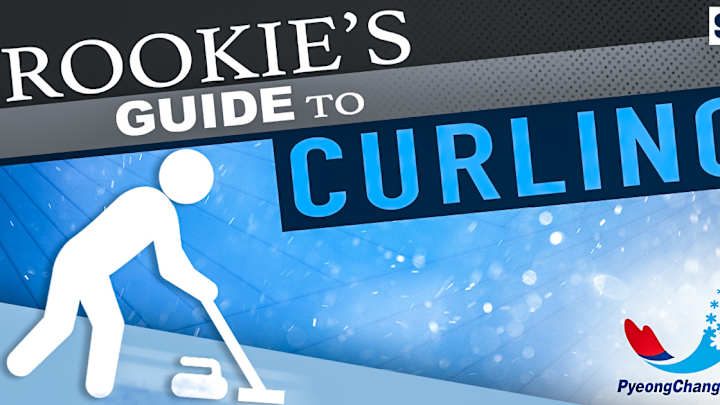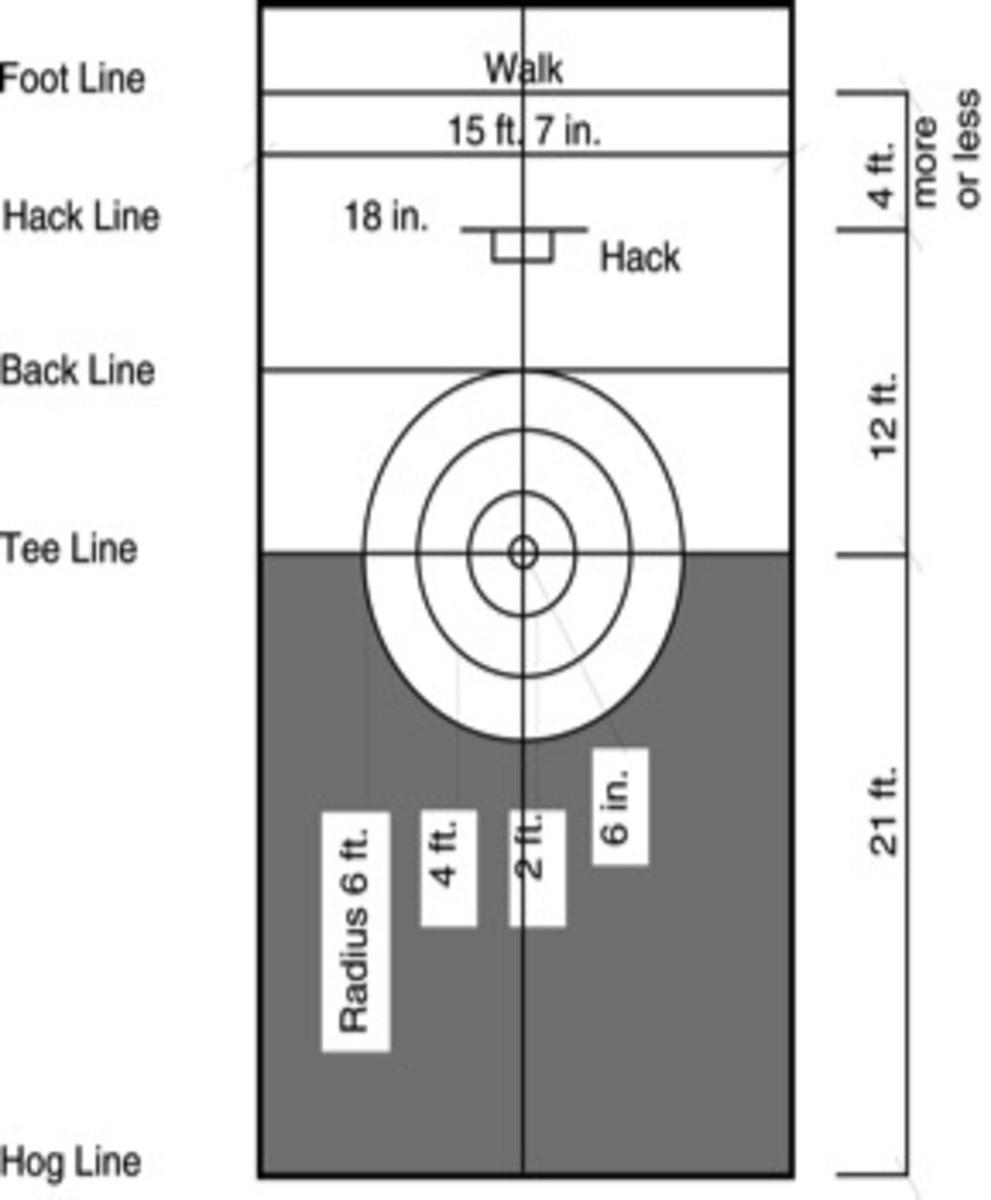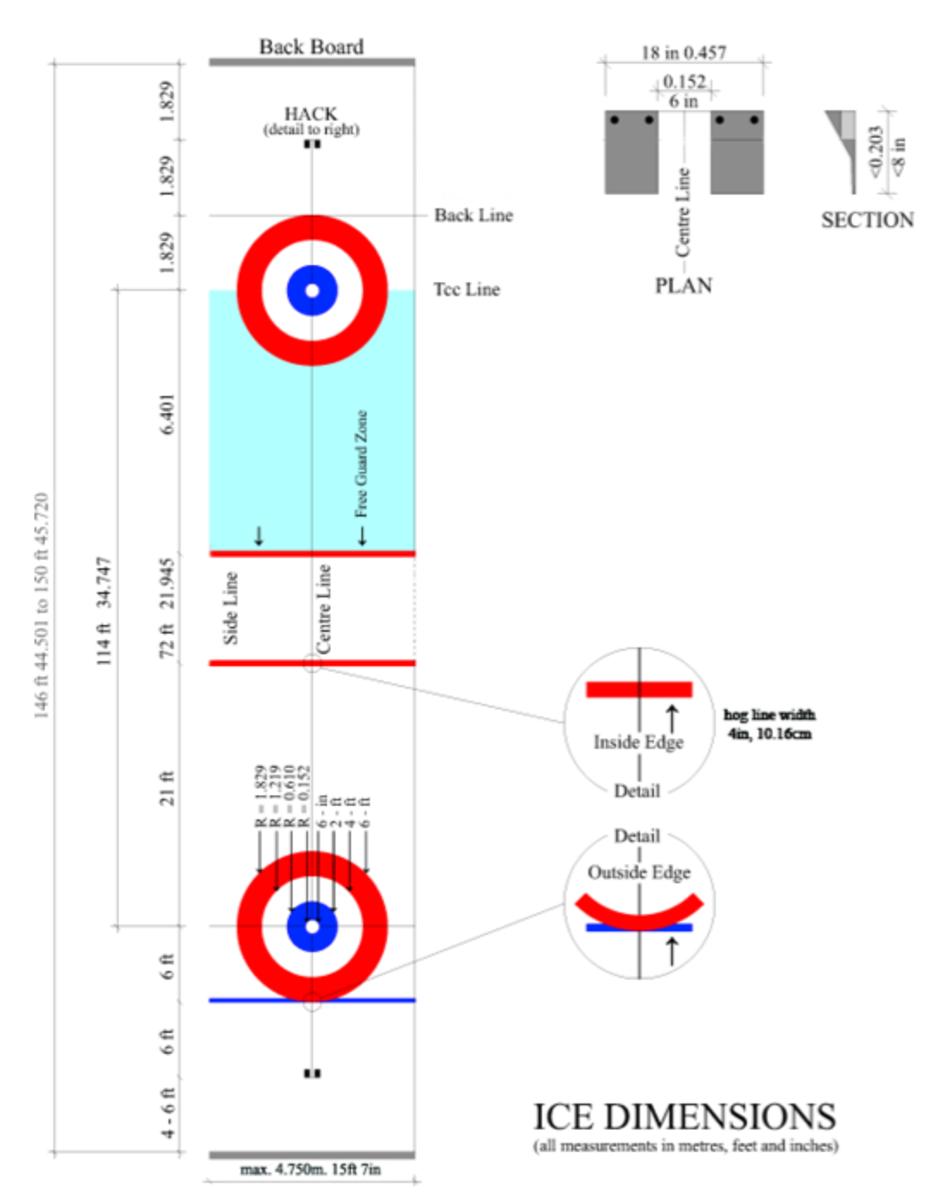A Rookie's Guide to Curling at the 2018 Winter Olympics

The 2018 Winter Olympics in PyeongChang, South Korea are right around the corner! That means it's time to watch sports you might not have seen in four years. To help you feel at least a little more informed—either to impress your friends or fake your way through a conversation with an actual expert—SI will be providing rookie's guides to each of the 15 sports. These will be published daily, Monday through Friday, from December 4-22.
For those of you who did not watch the World Curling Championships the last three years, but want to catch the action on the curling sheet at PyeongChang, South Korea, here is is a simple guide to give you all the information you will need to enjoy Olympic curling in 2018.
History
There's evidence that people have been curling since the 1500s, but it did not become an official Olympic sport until 1998. Although there was an outdoor event in the 1924 Games that was retroactively added to the record books in 2002, and it was also a demonstration sport in the 1992 Olympics (meaning they played to promote it, but it was not an official sport).
Curling traditionally features a men's and women's competition where teams of four battle it out for the top spot. This year a mixed doubles competition was also added. Although the four-on-four team and two-on-two mixed doubles variations of curling are similar, there are some major differences that make the games distinct from each other.
The Playing Surface
All versions of Olympic curling are played on a curling sheet, a 138 foot by 14 foot surface made out of artificially created ice, with water droplets added to create bumps called pebbled ice, which allow for more consistent curling. The objective is to throw the curling stone, a 42-pound piece of polished granite, and have it land as close to the center of the house as possible.

The house is the the 12-foot wide set of concentric rings wrapped around the center, or the button. There is a house on each end of the sheet, along with a set of lines and markers that are used for different aspects of the game. There is the hack, which is the starting point of each throw and one is set up 12 feet behind each button. Players throw the stone to the button furthest from them.

They leave the hack to start their delivery and they must release the stone before it starts to cross the hogline, which is 21 feet in front of the button and represents the start of the free guard zone on the other end of the sheet. The free guard zone runs from the hogline to the teeline, and it is the place on the sheet where stones are left in play even if they did not reach the house. The teeline is the line that runs through the button and is essentially perpendicular to the route taken by the stone.

If a stone fails to reach the the free guard zone, it is taken out of play. There is also the backline, which starts behind the teeline right at the edge of the house.
Basic Rules
Each team alternates in throwing its eight stones, trying to get as close to the button as possible. When all 16 stones have been played, it is the conclusion of the end, and the team that scores is the team with the stone closest to the button. A team is awarded one point for each stone it has closer to the button than the opponent's closest stone. Only stones that are in the house can score points. The throwing aspect is a bit like shuffleboard, but the scoring is quite different since only one team can score in each end.
The team that fails to score in an end is given the hammer, or the last throw, in the next end. If neither team scores it is called a blank end, and the same team keeps the hammer into the next end.
When the stone is tossed toward the house, sweepers use brooms to help clear ice to allow the stone to continue sliding down the sheet at a desired trajectory. While three players are are on one end of the curling sheet directly affecting the throw and the stone's trajectory, the fourth member is behind the button on the other end assisting with strategy, like how fast to throw the stone or where to try and place it on the sheet. The teammate in the back is usually the skip, and this player is like the captain of the team. Teammates will generally yell at each other to communicate strategy such as where or how fast to sweep and just how fast the stone is traveling.
Until four stones have been thrown, stones in the free guard zone are left in play. If one of the stones not in the house is moved by the opposing team's stone, it is put back to where it was, and the opposition's stone that touched it is out of play. If a stone is touched by a broom or a player, that is called burning a stone, and it is also taken out of play.
After 10 ends, the team with the most points is the winner. If the score is tied, extra ends are played until one team takes the lead.
In mixed doubles curling however, only five stones are thrown. Each team has the same person throw the first and last stone of each end, with the other team member throwing the middle three. Additionally, two stones start off in play for each team. One right by the button and another of the opposing team at the center line between the button and the hog line. The option to decide which team's stone starts in which position is decided by the team that did not score in the last round, and the hammer is given to the team whose stone is placed in the house. Each team also gets one power play, where the team with the hammer can slightly adjust the positioning of the stones so they are not in the center of play, but that cannot happen during extra ends. Expect each team to use its power play during a game because it gives teams a good chance to score three or four points in an end. The key for each team will be if it can use its power play at the most advantageous time, whether that's saving it for the final end to steal a close game or using it to create big lead earlier in the contest.
Strategy
The strategy of curling starts from the second the coin is flipped and the teams decide who gets the hammer first. Having the hammer is advantageous because with the last shot you can either set yourself up for a chance to secure points in the end or you at least have one last chance to stop your opponent from scoring.
If a team has the hammer and is in position to score only one point for the end, that team might try to clear out all of the stones in the house with the hammer to make it a blank end. The team would maintain the hammer and would now have a chance to score more than one point in an end.
When a team is in position to score for an end, it may try to establish guard stones to prevent the opposition from getting close to the button or make it harder for the opposition to remove stones from the house. Teams will try to avoid guard stones by throwing the stone with a lot of curve, or curl, on it. The stone will curl outward if the thrower twists their palm away from their body when they release it on the throw. The stone will go inward if the thrower twists their palm toward their body on the release.
Types of shots:
Guard: This is a shot that protects the house and makes it harder for your opponent to land one of their stones in scoring position.
Draw: This is a shot intended to land in the house.
Knockout: This is a shot used to clear as many stones as possible, sometimes even your own stones.
How Does Olympic Play Work
Olympic play is pretty simple. There is a round robin set of play where the 10 teams involved play each other once. Then the top four teams play in the semifinals, with the winners of those games playing for the gold medal and the losers playing for the bronze.
The teams are decided based off a scoring system involving performance at the 2016 and 2017 World Curling Championships. Of the 10 teams participating, seven are chosen based off the scoring system, two are picked at a pre-Olympic qualifier and the last spot is given to the host nation. For mixed doubles, only the top seven teams from the qualifying scoring system and the host nation will participate.
Competition will start the day before the Opening Ceremony with mixed doubles and competition will end during the last day of the games with the women's final. The men's final will take place the day before the women's final.
How Hard Is It?
You are sliding on ice while trying to throw a 42-pound granite stone more than 100 feet. Or, you are trying to sweep ice while you slide along with the granite stone, trying to make sure it stops exactly where you want it. You are going to need lots of balance whether you are throwing or sweeping, and throwing is going to require a strong core and good leg strength. You are shooting yourself and an additional 42 pounds off one leg while your other is balancing you on ice as you're in an awkward squat-like position.
No, you will not be amazing at curling, even if you had a whole week to train for it. Don't take my word for it, take it from American curler Phill Drobnick who told Entertainment Weekly just how hard it is to become a professional curler.
This video featuring the 2010 U.S. Olympic curling team will show you just how difficult it is and how much time it takes to become a good curler.
If you still think you could do it no problem, check out this video from The Wall Street Journal.
Teams to Watch For
Expect to see Canada in the mix in men's, women's and mixed doubles competition. In the 2017 World Curling Championships, Canada took home the top prize for men's and women's and finished second in mixed doubles. Additionally, the men's and women's teams are the reigning Olympic gold medal winners. The men's team has won the gold three straight times and won silver in the two competitions prior. The women's team's first gold medal came in 1998, and it took silver in 2010 and won bronze in 2002 and 2006.
When it comes to men's curling, Canadian Kevin Martin is tied with Torger Nergaard and Flemming Davanger of Norway as the only men to win multiple medals at the Olympics, with each winning one gold and one silver medal. For the women, the five members of the Swedish team that won the gold medal in 2006 and 2010 are the only women to win two medals at the Olympics.
In men's competition, Sweden, the United States, Japan and Switzerland rounded out the top five in qualifying points, with Canada claiming the top spot. The Canadian women also had the top spot in qualifying points with Russia, Switzerland, Great Britain and the Untied States filling in the rest of the top five. For mixed doubles, China was the top qualifier and Canada, Russia, Switzerland and the Untied States were the rest of the top five.
